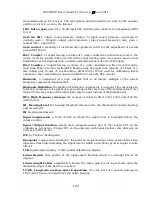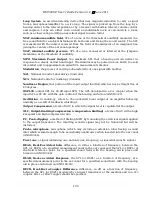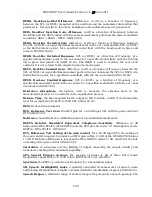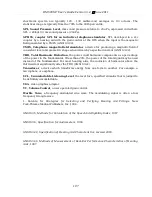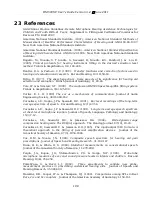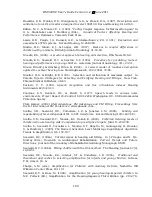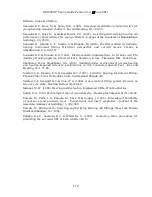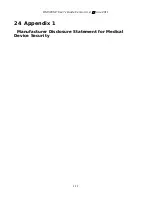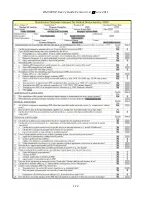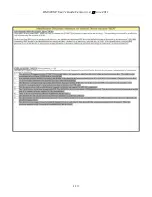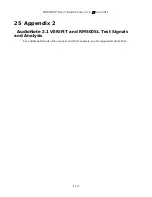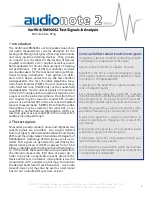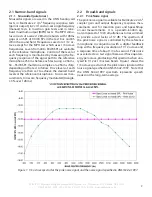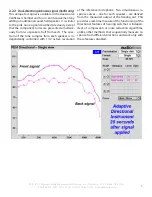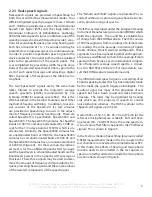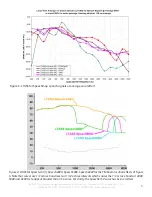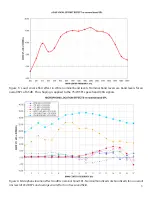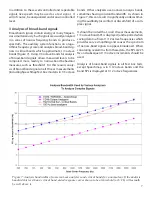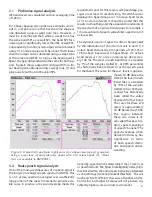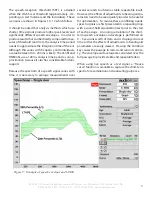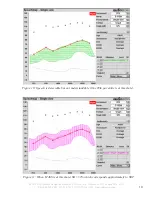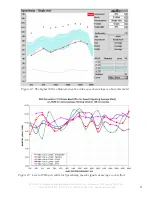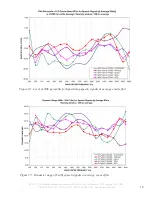
2.2.3 Real-speech signals
Real-speech signals are provided in Speechmap for
both On-ear and Test box measurement modes. Four
different digitized speech passages (2 male, 1 female
and 1 child) are provided as well as the International
Speech Test Signal (ISTS) and the single-talker In-
ternational Collegium of Rehabilitative Audiology
(ICRA) distorted speech signal. In addition, one of the
speech passages has been filtered to provide 3 varia-
tions for evaluating frequency-lowering hearing aids.
Each has a duration of 10 – 15 seconds and may be
presented as a single passage or in a continuous loop.
In order to provide a repeatable speech signal to the
device under test, the signal path must be equalized
prior to the presentation of the speech signal. This
is accomplished by presenting a 896 ms pink noise
burst at the selected speech level, 256 ms prior to the
start of each speech passage and adjusting a digital
filter to provide a flat response at the reference mi-
crophone.
The two “Speech-std” signals are by the same male
talker, filtered to provide the long-term average
speech spectrum (LTASS) recommended by Cox
& Moore (1988) for average vocal effort. This is the
LTASS assumed in the Desired Sensation Level (DSL)
method of hearing aid fitting. In addition, four spe-
cial versions of the Speech-std (1) test stimulus
are provided in Speechmap to assist in the adjust-
ment of frequency-lowering hearing aids. These are
called Speech3150, Speech4000, Speech5000 and
Speech6300. The Speech3150 stimulus has had the
bands at 1000 Hz and above attenuated by 30 dB ex-
cept for the 1/3 octave band at 3150 Hz which is un-
attenuated. Similarily, the Speech4000 stimulus has
an unattenuated band at 4000 Hz, the Speech5000
stimulus has an unattenuated band at 5000 Hz and
the Speech6300 stimulus has an unattenuated band
at 6300 Hz (Figure 4). For these stimuli, the indicat-
ed level is for the unfiltered Speech-std (1) passage
and the band levels in all unattenuated bands are the
band levels present in the Speech-std (1) passage at
that level. These three signals may be used to deter-
mine the amount of frequency shift provided by fre-
quency-lowering hearing aids and the sensation level
of the lowered components of the speech signal.
The “female” and “child” signals are presented “as re-
corded” without any processing and have been cho-
sen to provide a range of spectra.
The ISTS was developed under the European Hearing
Instrument Manufacturers Association (EHIMA) which
holds the copyright. The sound file is available free
of charge from the EHIMA website. The ISTS consists
of 500 ms segments from recordings of 6 female talk-
ers reading the same passage in American English,
Arabic, Chinese, French, German and Spanish. These
segments have been spliced together with appropri-
ate pauses and filtered to match the average female
spectrum from Byrne et al, An international compari-
son of long-term average speech spectra. J. Acoust.
Soc. Am. 96 (1994), 2108-2120. For more details, con-
sult the EHIMA website (www.ehima.com).
The ICRA distorted speech signal is a recording of an
English-speaking talker that has been digitally modi-
fied to make the speech largely unintelligible. The
resultant signal has many of the properties of real
speech but has a harsh sound and lacks harmonic
structure. The latter may be significant for hearing
aids which use this property of speech to control
noise reduction schemes. The LTASS is similar to the
“Speech-std” signals up to 5 kHz.
Overall SPLs of 50, 55, 60, 65, 70 and 75 dB (at the
reference microphone) are available. Soft and Aver-
age levels (50 - 70 dB SPL) have the same spectrum.
A Loud vocal effort filter is applied to the 75 dB level
signals. This is shown in Figure 5.
In the Test box mode in Speechmap (previously called
S-REM) measurements made in the 2 cc coupler in the
test chamber are converted to estimated real ear SPL.
In this mode, the effects of hearing aid microphone
location need to be included in the test signals so
spectra are further altered to include the microphone
location effects shown in Figure 6.
09/01/29 © Etymonic Design Incorporated, 41 Byron Ave., Dorchester, ON, Canada N0L 1G0
USA 800-265-2093 519-268-3313 FAX 519-268-3256 www.audioscan.com
4
Summary of Contents for RM500SL
Page 1: ...RM500SL User s Guide Version 3 4 March 2010...
Page 9: ...RM500SL User s Guide Version 3 4 June 2011 EC Declaration of Conformity 9...
Page 10: ...RM500SL User s Guide Version 3 4 June 2011 10...
Page 37: ...RM500SL User s Guide Version 3 4 June 2011 37...
Page 43: ...RM500SL User s Guide Version 3 4 June 2011 telecoil test 43...
Page 51: ...RM500SL User s Guide Version 3 4 June 2011 51...
Page 57: ...RM500SL User s Guide Version 3 4 June 2011 57...
Page 64: ...RM500SL User s Guide Version 3 4 June 2011 64...
Page 78: ...RM500SL User s Guide Version 3 4 June 2011 Screen tour unaided screen 78...
Page 97: ...RM500SL User s Guide Version 3 4 June 2011 97...
Page 98: ...RM500SL User s Guide Version 3 4 June 2011 98...
Page 99: ...RM500SL User s Guide Version 3 4 June 2011 99...
Page 102: ...RM500SL User s Guide Version 3 4 June 2011 102...
Page 112: ...RM500SL User s Guide Version 3 4 June 2011 112...
Page 113: ...RM500SL User s Guide Version 3 4 June 2011 113...

